20 years ago, flooding devastated Summit, Stark, neighboring counties
Thunderstorms that rolled into Northeast Ohio on a Monday afternoon 20 years ago dumped a lot of rain, but as evening fell on saturated ground, another batch of storms hit the area even harder.
The National Weather Service reported much of the area saw from 1 to 3 inches of rain, but a band extending roughly from Akron to Youngstown saw 2 to 5 inches, with some places accumulating 5 to 10 inches of rain.
Hundreds of people were displaced in north Akron, Cuyahoga Falls, Stow and elsewhere, but the city of Hudson was particularly hard-hit on July 21, 2003, with two residents drowning in a basement laundry room.
A witness described seeing "a wall of water" flowing into the underground parking garage that led to the room's only entrance.
The following Sunday, storms returned and devastated Stark County.
Widespread damage in Summit County
Damage in the region was severe enough to warrant a visit to Hudson by then-Gov. Bob Taft, who declared Summit, Portage, Cuyahoga, Mahoning, Medina and Trumbull counties disaster areas.
In Summit County alone, losses were estimated at $100 million and the weather service reported more than 300 homes sustained enough damage to be declared destroyed or uninhabitable. As many as 1,000 other homes and businesses had lesser damages.
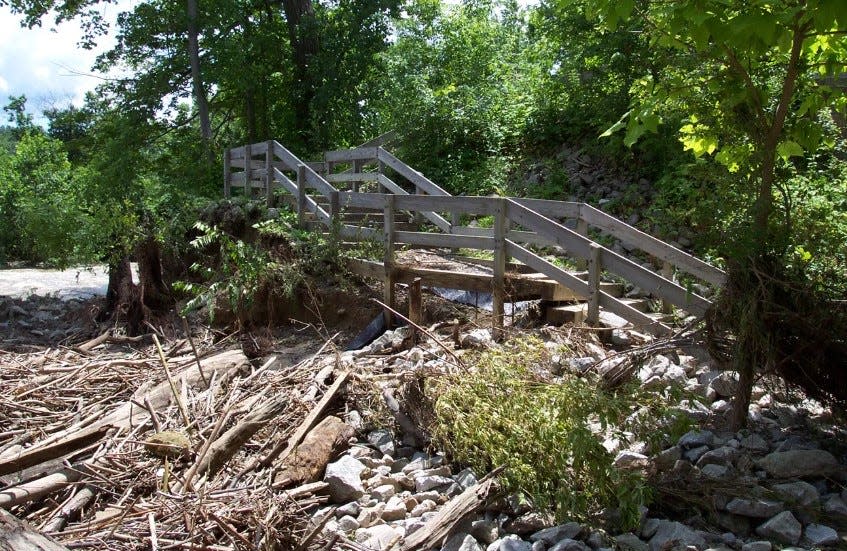
An initial estimate put damage at $1 million in the Cuyahoga Valley National Park, where a large section of the Kendall Dam in Boston Township collapsed and parts of the Towpath Trail and Cuyahoga Valley Scenic Railroad were washed out. Smaller trails and at least eight foot bridges were also damaged, the park service said.
Flood risk: What’s the real flood danger in Ohio? More homes at risk than thought
In Stow, where the weather service said 6.28 inches of rain was recorded and dozens of people had to be evacuated, dispatchers received nearly 1,000 calls from residents during the evening storm, or about 10 per minute. The fire department rescued about 30 people from high water surrounding their cars and buildings. The weather service said about 500 homes and 30 businesses were damaged and then-Mayor Lee Ann Schaffer estimated about 85% of the city was flooded to some degree.
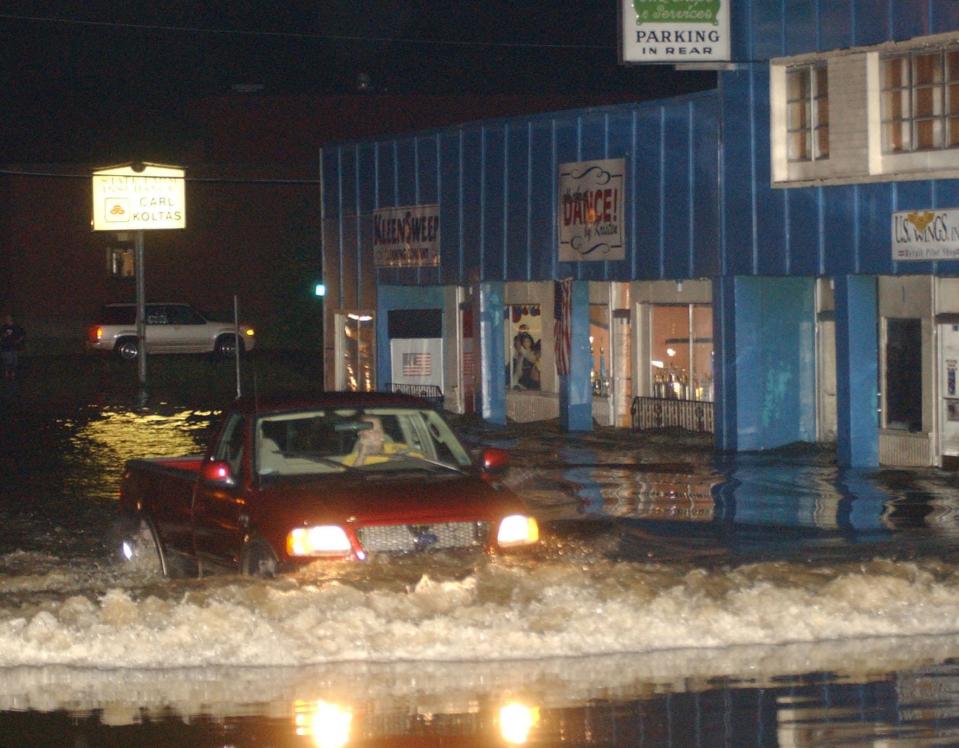
In Boston Township and Peninsula, parts of state Route 8, Hines Hill Road, and Riverview Road were closed due to flooding, and Truxell Road was closed after both sides were washed out. Stow firefighters were dispatched to Peninsula to rescue a man who had climbed into a tree to escape high water.
Elsewhere in the county, the weather service said Richfield saw 7.2 inches of rain, and a Cuyahoga Falls spotter recorded 4.6 inches of rain.
Mud Brook creek flooded the Merriman Valley neighborhood of northwest Akron, cutting off an apartment complex on West Portage Trail and trapping nearly 200 residents. The residents were rescued later the next day after a temporary road was built. The weather service said more than 400 homes were damaged in Cuyahoga Falls.
In Twinsburg, Tinkers Creek flooded and damaged several dozen homes and businesses.
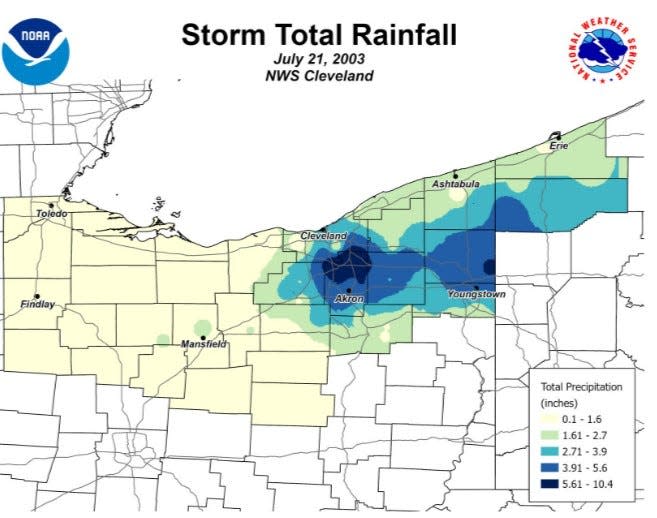
Storm caused 5 deaths, including 2 in Hudson
According to the National Weather Service, the storm was responsible for five fatalities. In addition to the two Hudson deaths, a Silver Lake man was electrocuted while replacing a basement water pump.
The other two deaths were a 10-year-old boy in Warren who was sucked into a culvert and a man who drowned after floodwaters washed out a bridge outside Cochranton, Pennsylvania, sweeping three cars into the French Creek.
A rain gauge at the Hudson Community Television Station recorded 7.5 inches of rain over 4½ hours, and one at Hudson Middle School recorded nearly 3 inches of rain accumulating during one 30-minute period, from 7:45 to 8:15 p.m.
Historic flood: Expert says Ohio’s 1913 flood was part of country’s No. 1 weather event
According to the weather service, Brandywine Creek rose 2 feet every 10 minutes between 8 and 9 p.m., flooding an area around the Versailles condominium complex.
At around 9 p.m., emergency services received a 911 call reporting two residents were trapped in a basement garage at the the Versailles condominium complex.
About 80 Versailles residents were evacuated by boat and ended up taking refuge at Hudson High School.
Witness describes 'wall of water' flooding basement garage
It took several minutes for a Hudson police dispatcher to fully ascertain the situation at Versailles, though firefighters were en route as a caller passed her cellphone to another witness, who said the department would need an engine and a water pump to reach two men trapped there.
One of the callers said the basement was already filled with water and the building's first-floor was halfway full.
June Young Pak, 18, who had just graduated from Hudson High School, and R. Chris Kirby, 53, owner of Hickman Jewelry, were found dead in the basement laundry room about 9:40 a.m. Tuesday, after floodwaters had receded.
The Summit County technical rescue team, which included specialists from several communities, had arrived the previous night but found conditions too dangerous, with dark, murky water filling the garage to the ceiling and large objects including automobiles floating about.
More: Search suspended for night for Akron boy swept away in creek
Accounts reported by the Hudson Hub-Times were that Hickman, who lived alone in the building, was moving cars out of the basement and Pak went to assist when he heard yelling from the basement. Pak was reportedly living with his mother and younger brother in the complex.
A woman visiting her mother said she saw the basement flood around 8:15 p.m.
"A wall of water came in and it filled up within minutes," she said. "It just came out of nowhere."
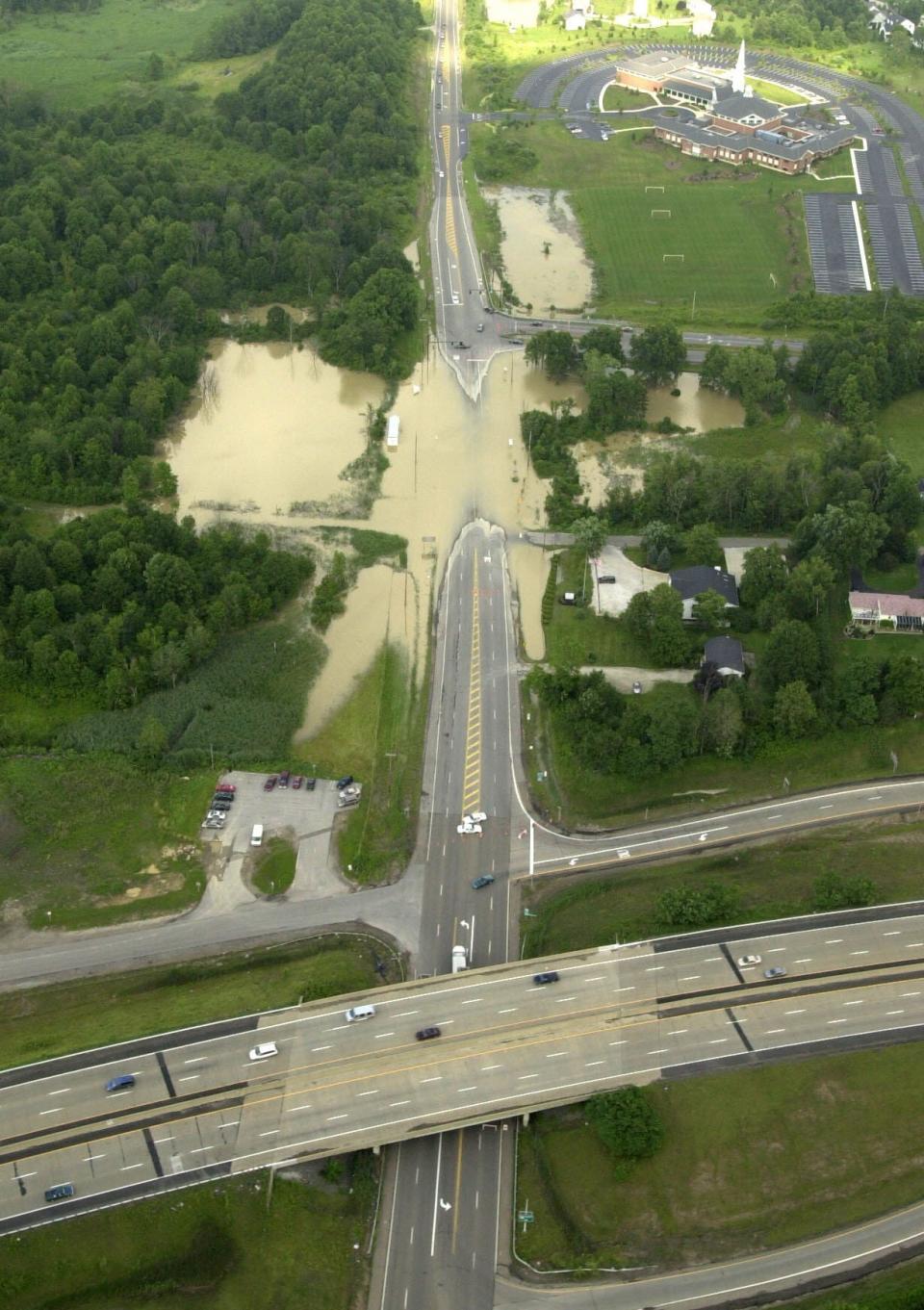
There was a stairway from the basement upstairs, but pressure from water once it reached halfway up the door there would have made it impossible for the men to open, said then-Police Chief Dave Robbins.
Robbins speculated Kirby and Pak had tried to seal themselves in the laundry room while waiting for the rain to stop. The laundry room eventually filled with water.
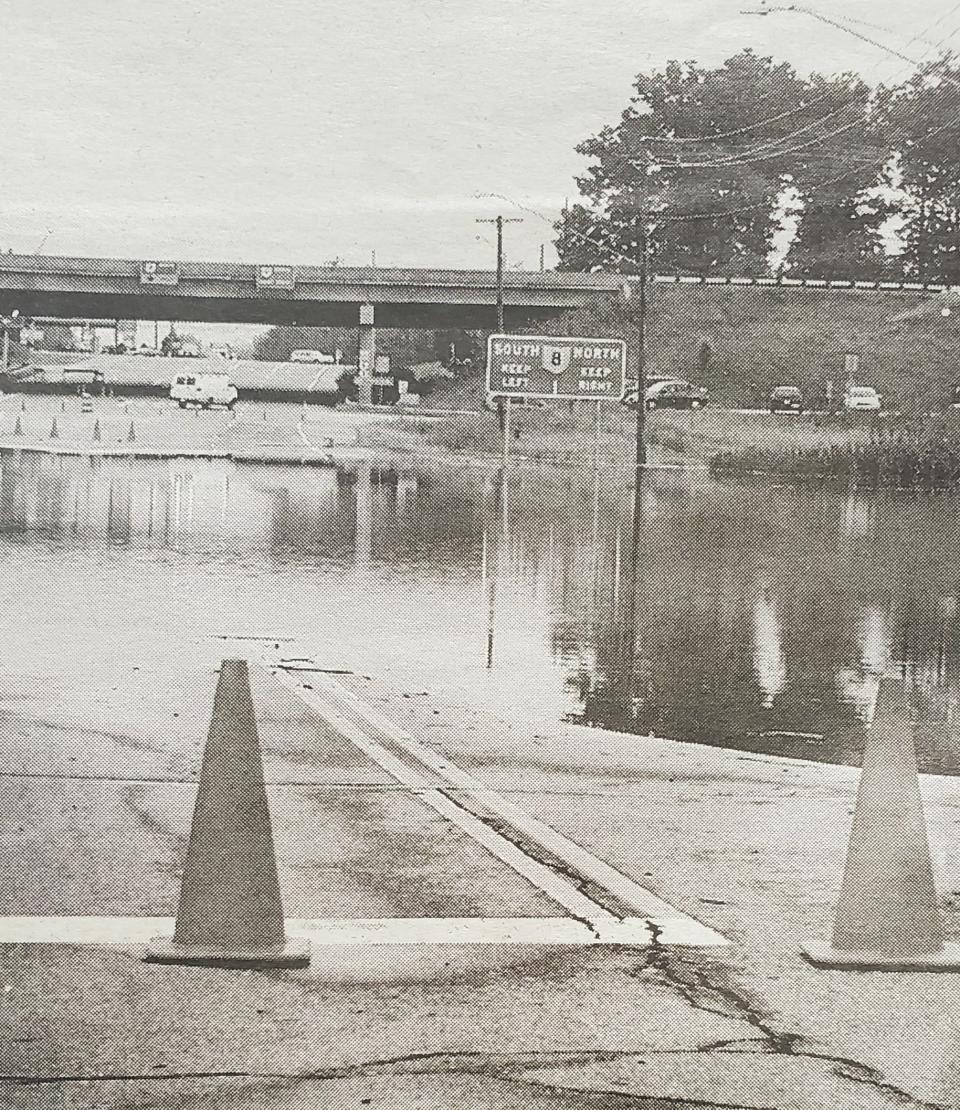
Flash flooding one week later in Stark County
The ground remained saturated a week later when on July 27 another batch of storms moved into the area, dumping 2 to 5 inches of rain that led to catastrophic flash flooding in Stark County.
Flash flooding of Nimishillen Creek devastated the cities of North Canton, Canton and Louisville. More than 1,000 homes and 500 vehicles were damaged by flooding in Stark County. Dozens of roads and at least three major bridges were washed out, with several water rescues needed, according to the weather service.
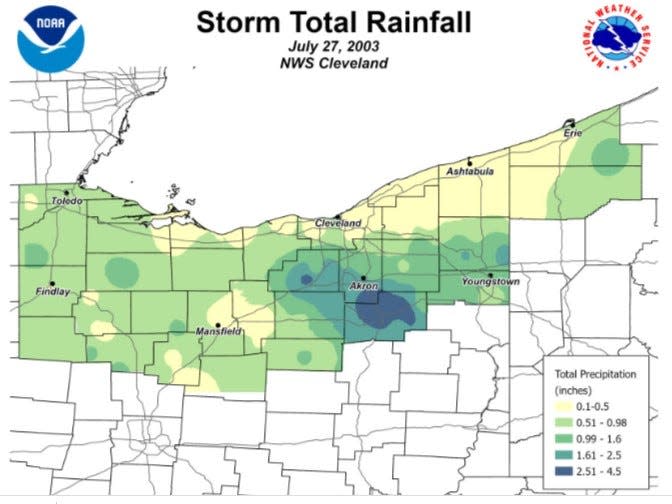
In addition to the $100 million in Summit County losses, total damage was estimated near $52 million in Stark County.
Other counties suffering extensive damage due to the July 21 and July 27 storms:
$32 million damage in Trumbull County.
$30 million damage in Crawford County, Pennsylvania.
$20 million damage in Portage County.
$5 million damage in Cuyahoga County.
$750,000 damage in Mahoning County.
After a relatively dry June, where only about 2.5 inches of rain had fallen in the Greater Akron area, the weather service reported more than 12.5 inches in July at the Akron-Canton Airport − about 8 inches above normal, with much of that due to the storms of July 21 and 27.
Flooding a constant threat in Ohio
Severe thunderstorms that dump heavy rains flood parts of the region on a regular basis, often in the summer months.
Just over one year after the 2003 disaster, remnants of Hurricanes Frances and Ivan crossed Ohio in August and September 2004, dumping heavy rain in a month-long series of storms. Hardest hit were 21 Ohio counties on the eastern side of the state from Trumbull, Mahoning and Stark counties and south along the Ohio River. They were declared disaster areas by the Federal Emergency Management Agency.
In June and July of 2006, storms on a line from Toledo to Canton brought flooding. And flooding in August 2007 displaced around 200 residents in Barberton.
A storm in July 2011 flooded about 400 homes in the county, hitting Copley Township particularly hard, but also closing the Akron-Canton Airport.
More: Summit County plans to create stormwater district using portion of its ARPA funds
Flooding in May 2014 hit Lorain, Medina and Summit counties. At one monitoring station, 4 inches of rain were reported in 30 minutes. In June 2019, floodwaters struck Wadsworth, Norton, Barberton and Akron neighborhoods.
Eric Marotta can be reached at emarotta@gannett.com. Follow him on Twitter @MarottaEric.
This article originally appeared on Akron Beacon Journal: Storms in 2003 flooded Summit, Stark, killing two in Hudson garage

